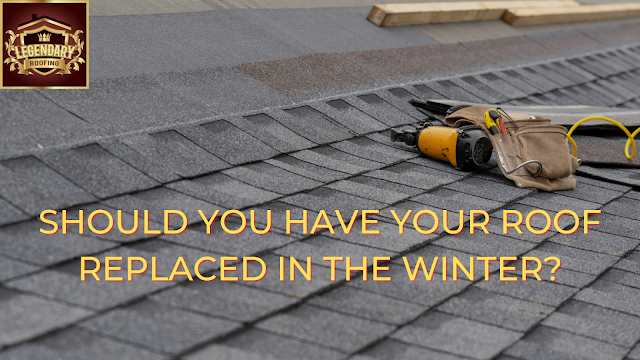Do You Need Emergency Roof Repairs?
Emergency roof repairs are necessary. This is because roof problems will never be solved on their own. In fact, over time, roofing problems will become more severe, especially when water is involved.
You are most likely to need an emergency roof repairs in the following situations:
- Leaks in the roof
- Missing or damaged shingles
- Rise or fail around the chimney, Valley, wall joints, and pipe boots
Leakage will never get better on its own,
only worse as it causes your roof to be more vulnerable. Even if it seems to be
only a small leak, it can cause severe floods. Water can seep into the walls,
which will destroy both the insulation and the wooden boards that hold the
house together. Water can also cause the wood to rot, soak into the drywall and
make the whole roof collapse. If you find a leak or even symptoms of a leak, you
should call Legendary
Roofing immediately for emergency roof repairs.
Missing or damaged shingles can provide a way for water to enter
your home and cause major damage. Water and other roofing materials will not
mix, which is why your roof should be watertight; moisture can severely damage
your house structure and its genuineness. In addition to active leakage (water
can enter through ceilings or walls), water can also promote the growth of mold
and mildew. Both molds and mildews can cause serious health problems, which
means that you need to address the absence, rupture, breakage, or other damage of
shingles immediately.
Waterproof panels are very thin materials, usually galvanized
steel, but they can also be made of other metals or other materials, which can
lead water out of key areas of the roof. You will see it where the roof plane
intersects a vertical surface (such as a wall or skylight). It is also
installed around vents, chimneys, and skylights on the roof.
Since its job is to draw water out of these areas, it needs to
remain faultless. If these are raised, rusted, or have other malfunctions, it
may allow water to enter your house. This means that you need to repair the
roof urgently to prevent more damage.
Do you need emergency roof repairs?
If your roof has begun to show signs of damage, you should
immediately call a Legendary
Roofing professional contractor for a
free roof inspection. Your inspector will find the damaged area and provide you
with a solution to repair and prevent further roof damage.
Legendary Roofing
Houston is your local roofing specialist. Give us a call and schedule
your free roofing
inspection.
Call us anytime at (346) 763-5534














